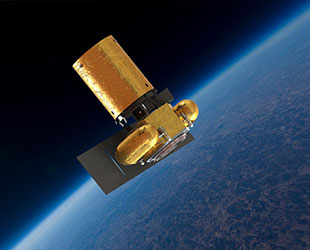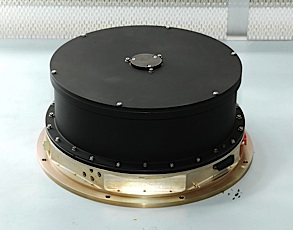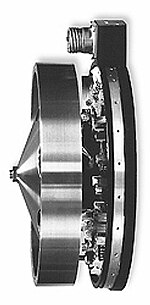 |
| An artist's rendition of the Arkyd-100 in orbit. |
Among the most interesting revelations is the company's plan to use the telescope for laser communications rather than relying on a network of radio dishes. Laser communications is a really neat technique. Basically, instead of sending telemetry and images over modulated longer-wavelength radio waves (like most satellites do to communicate with ground stations on Earth), you use shorter-wavelength waves in the visible spectrum. This has many benefits:
- Because shorter wavelengths have higher energy, you can transmit information at a much higher density, or data rate.
- Radio and television stations transmit in the radio wavelengths, so anyone operating a radio transmitter needs a license to avoid interference. The optical spectrum has none of these restrictions.
- Laser receptors/transmitters on the ground are much smaller and cheaper to build and operate than their radio counterparts.
- For satellites with imaging payloads, the telescope can be used both as an optic to collect light (take images or receive information) and as a laser to send it (transmit images to the ground). there is no need for a separate radio antenna that takes up room and adds mass to a satellite.
The company says it hopes to sell its satellites to other companies to help fund its ultimate goal of retrieving and selling valuable platinum from an asteroid. I will certainly be watching as their design matures and progresses!
You can watch their informational video, which includes a small tour of their facilities, here.
You can watch their informational video, which includes a small tour of their facilities, here.

